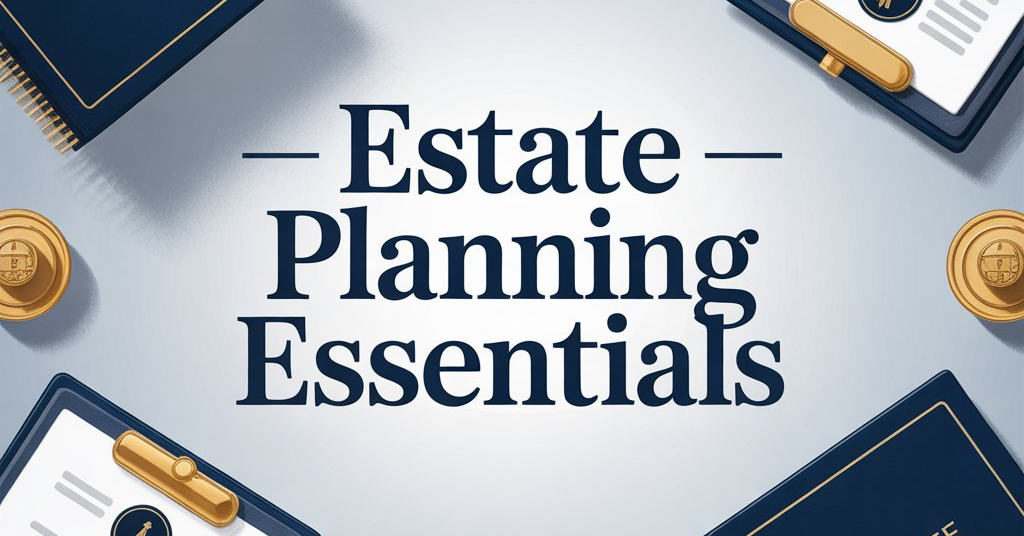Estate planning is not just about passing on wealth; it’s about ensuring your loved ones are protected, your wishes are followed, and your assets are distributed efficiently after your death. For Australians, understanding estate planning is crucial, whether you have a modest home, superannuation, or significant investments. This guide breaks down everything you need to know, with practical examples and calculations, to make your estate planning essentials process clear and actionable.
What is Estate Planning?
Estate planning is the process of preparing for the management and distribution of your assets after death or in case of incapacity. It ensures that your wishes are honoured, reduces legal complications, and can minimise taxes.
In Australia, estate planning involves key elements like creating a will, setting up trusts, appointing guardians for minors, and nominating beneficiaries for superannuation and insurance.
Why Estate Planning is Important for Australians
- Control Over Asset Distribution
Without a plan, your estate is distributed according to state laws, which may not align with your wishes. - Protection of Minor Children
You can appoint guardians for your children to ensure they are cared for by people you trust. - Avoiding Probate Delays
A clear estate plan can help your family avoid long court proceedings, saving time and stress. - Tax Efficiency
While Australia doesn’t have federal estate taxes, proper planning can reduce stamp duty, capital gains tax (CGT), and other costs. - Peace of Mind
Knowing your affairs are organised provides security for you and your family.
Key Estate Planning Essentials Documents in Australia
1. Last Will and Testament
A will specifies how your assets should be distributed and names an executor to carry out your instructions.
Example:
Emma, a Melbourne resident, leaves her house equally to her two children and names her sister as executor. This ensures her home passes directly to her children according to her wishes.
2. Testamentary Trusts
Trusts allow your assets to be held and managed for your beneficiaries, often providing tax advantages.
Example:
James sets up a testamentary trust for his grandchildren. The trust receives his investment portfolio, which grows over time. The trustee manages the funds for education expenses.
3. Enduring Power of Attorney (Financial)
An Enduring Power of Attorney (EPA) appoints someone to manage your financial affairs if you become incapacitated.
Example:
Linda appoints her brother as her EPA to manage her property and bank accounts if she cannot do so herself.
4. Enduring Power of Attorney (Medical/Health)
This allows someone to make medical decisions on your behalf.
Example:
Robert designates his wife to make healthcare decisions if he is incapacitated, including surgery and treatment consent.
5. Beneficiary Nomination for Superannuation
Your superannuation fund may allow you to nominate beneficiaries, which ensures the money goes to the right person without being part of your estate.
Example:
Sarah nominates her daughter as the beneficiary of her superannuation fund. After her passing, the fund is paid directly to her daughter.
6. Digital Assets and Other Considerations
Include instructions for digital accounts, online banking, cryptocurrency, and even social media profiles.
Example:
Michael lists his cryptocurrency wallets and online banking instructions in a secure document accessible to his executor.
Calculated Example: Property and Capital Gains Tax (CGT)
Suppose you own a property purchased in 2010 for AUD 500,000, now worth AUD 1,200,000. You leave it to your child.
- Property Value: AUD 1,200,000
- Purchase Price: AUD 500,000
- Capital Gain: 1,200,000 – 500,000 = AUD 700,000
Assuming a 50% CGT discount for assets held over 12 months:
- Taxable Capital Gain: 700,000 × 50% = AUD 350,000
If your child sells the property later, CGT may apply, so planning through trusts can minimise tax.
Steps to Create an Effective Estate Plan
- Assess Your Assets
Include property, bank accounts, superannuation, investments, personal items, and liabilities. - Choose Executors and Guardians
Select reliable people for executing your estate and caring for minors. - Draft Key Documents
Prepare your will, trusts, enduring powers of attorney, and healthcare directives. - Nominate Beneficiaries
Ensure superannuation, life insurance, and investment accounts have updated beneficiary nominations. - Review and Update Regularly
Major life events like marriage, divorce, birth of a child, or acquiring property may require updates. - Store Documents Safely
Keep documents in a secure location and inform trusted people of their whereabouts.
Common Estate Planning Mistakes to Avoid
- No Will – Without a will, your estate is distributed by law, potentially causing disputes.
- Outdated Beneficiaries – Update superannuation and insurance beneficiaries regularly.
- Ignoring Digital Assets – Include cryptocurrency, emails, and online accounts.
- Not Planning for Incapacity – Without powers of attorney, courts may appoint decision-makers.
- Failing to Use Trusts When Needed – Trusts can provide tax benefits and protect assets.
Tax Implications for Australians
While Australia does not have federal inheritance tax, other taxes like CGT and stamp duty may apply. Proper planning can reduce unnecessary costs.
Example Calculation: Superannuation Death Benefit
- Superannuation Fund: AUD 300,000
- Tax-free Component: AUD 100,000
- Taxable Component: AUD 200,000 (taxed at 15% if paid to a dependent)
- Tax Payable: 200,000 × 15% = AUD 30,000
Planning can minimise tax impact on your beneficiaries.
Also Check: Financial Wellness Guide: Achieving Financial Balance
Final Thoughts
Estate planning is an essential process for all Australians, not just the wealthy. It ensures that your wishes are honoured, your loved ones are protected, and unnecessary legal or tax burdens are avoided. By understanding the key documents, steps, and calculations, you can create a robust estate plan that provides peace of mind.



